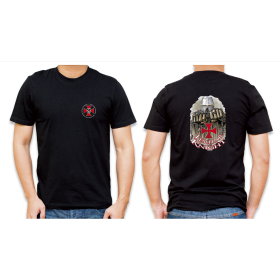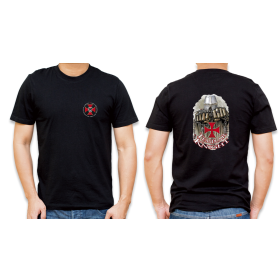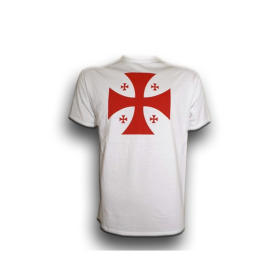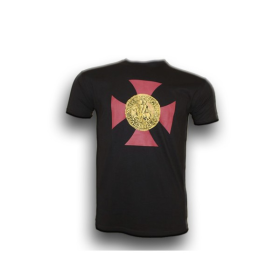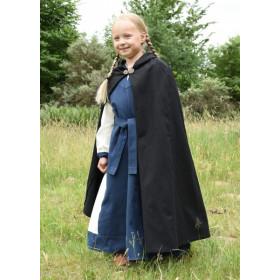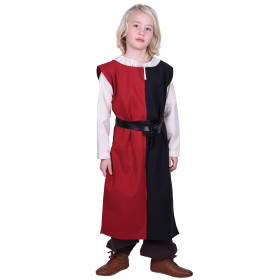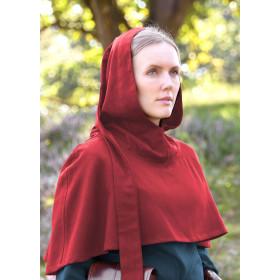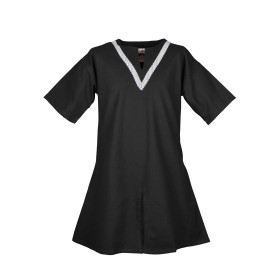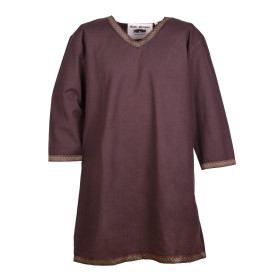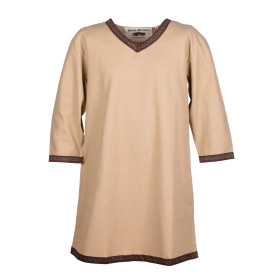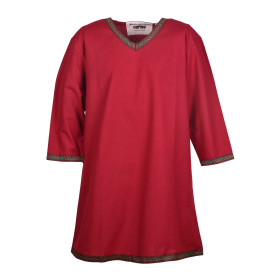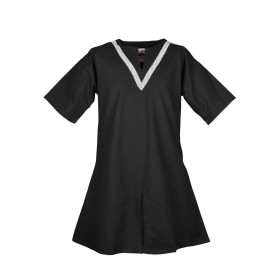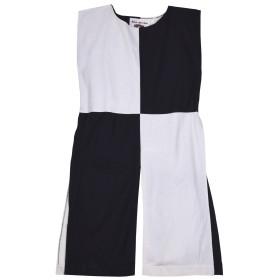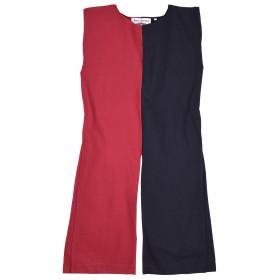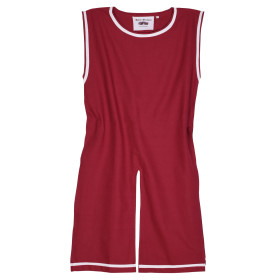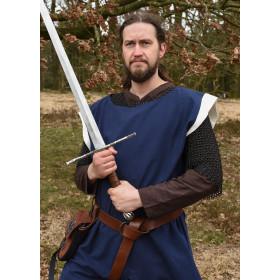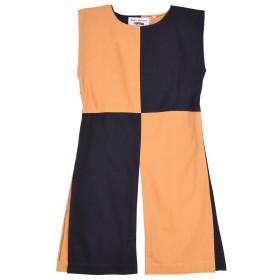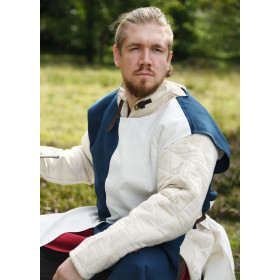Epicos Facts
There are 104 products.
Black T-Shirt with Cross Templars , model8
T-shirt Made of 100% cotton.
€12.85
Black T-Shirt with templar cross,model4
Medieval black T-shirt with Templar cross-seal. Made of 100% cotton.
€12.85
Black T-Shirt with the Templar Cross
White T-shirt with red templar crosses 100% cotton 180 grs.
€16.07
Black T-Shirt with the Templar Cross
Medieval black T-shirt with Templar cross-seal. Made of 100% 180 grs cotton
€21.42
Black T-Shirt with the Templar Cross
Medieval black T-shirt with Templar cross-seal. Made of 100% 180 grs cotton
€21.42
Golden Templar T-Shirt , model7
T-shirt Made of 100% cotton.
€23.56
White Templar T-Shirt , model5
T-shirt Made of 100% cotton.
€23.56
Paul Medieval Mantle for Children, brown
In the Middle Ages, the robe was a basic garment. Generally used by ordinary people as protection against elements, the robes could have several different lengths, with or without hood, and came in a variety of styles or patterns. There were numerous ways to fasten this particular type of coat or cape - with a fibula (brooch), a small chain, bows or, later, buttons.Our hooded robe is made of plain cotton and closes at the front with a single wooden button and single.
€26.78
Paul Medieval Robe for Children, black
In the Middle Ages, the robe was a basic garment. Generally used by ordinary people as protection against elements, the robes could have several different lengths, with or without hood, and came in a variety of styles or patterns. There were numerous ways to fasten this particular type of coat or cape - with a fibula (brooch), a small chain, bows or, later, buttons.Our hooded robe is made of plain cotton and closes at the front with a single wooden button and single.We would like to point out that cotton fabric is not waterproofed. However, it can be easily treated with a water repellent spray to withstand light rain.
€26.78
Medieval child tunic, yellow and black
This calf-to-calf tunic is made of sturdy cotton fabric. It has a straight cut and side slits from the waist down. It also features a slightly shorter slit in the center of the front and back.
€28.92
Medieval child tunic, black and red
Product available with different options
This calf-to-calf tunic is made of sturdy cotton fabric. It has a straight cut and side slits from the waist down. It also features a slightly shorter slit in the center of the front and back.
€28.92
Medieval child tunic, black and natural color
Product available with different options
This calf-to-calf tunic is made of sturdy cotton fabric. It has a straight cut and side slits from the waist down. It also features a slightly shorter slit in the center of the front and back.
€28.92
Hood Liripipe Gugel pointed, bordeaux
This Gugel is an excellent building material and a long tip (also attached to Liripipe). Due to the long tip, it can be attributed to the High and Low Middle Ages. This Gugel can be transported in various sizes and can also be accompanied.
A feature of the hood in general is this hood, which also covers the shoulders. The hood was first worn by the Vikings. In the High Middle Ages it was part of the everyday clothing of farmers, artisans and travellers. From the fourteenth century, the hood became a fashion accessory - the trim became fairer, the tip longer and the hem often decorated. From the sixteenth century it was rarely used.
Details:
- Available sizes: Single size
- Available colors: red, brown
-Material: 100% cotton
Care instructions: Machine wash at 40 ° C, delicate cycle, do not dry in dryer
Note:
Only the gugel is sold here! The other parts are separated from each other online.
A feature of the hood in general is this hood, which also covers the shoulders. The hood was first worn by the Vikings. In the High Middle Ages it was part of the everyday clothing of farmers, artisans and travellers. From the fourteenth century, the hood became a fashion accessory - the trim became fairer, the tip longer and the hem often decorated. From the sixteenth century it was rarely used.
Details:
- Available sizes: Single size
- Available colors: red, brown
-Material: 100% cotton
Care instructions: Machine wash at 40 ° C, delicate cycle, do not dry in dryer
Note:
Only the gugel is sold here! The other parts are separated from each other online.
€27.85
Liripipe Gugel pointed hood, brown
This Gugel is an excellent building material and a long tip (also attached to Liripipe). Due to the long tip, it can be attributed to the High and Low Middle Ages. This Gugel can be transported in various sizes and can also be accompanied.
A feature of the hood in general is this hood, which also covers the shoulders. The hood was first worn by the Vikings. In the High Middle Ages it was part of the everyday clothing of farmers, artisans and travellers. From the fourteenth century, the hood became a fashion accessory - the trim became fairer, the tip longer and the hem often decorated. From the sixteenth century it was rarely used.
Details:
- Available sizes: Single size
- Available colors: red, brown
-Material: 100% cotton
Care instructions: Machine wash at 40 ° C, delicate cycle, do not dry in dryer
Note:
Only the gugel is sold here! The other parts are separated from each other online.
A feature of the hood in general is this hood, which also covers the shoulders. The hood was first worn by the Vikings. In the High Middle Ages it was part of the everyday clothing of farmers, artisans and travellers. From the fourteenth century, the hood became a fashion accessory - the trim became fairer, the tip longer and the hem often decorated. From the sixteenth century it was rarely used.
Details:
- Available sizes: Single size
- Available colors: red, brown
-Material: 100% cotton
Care instructions: Machine wash at 40 ° C, delicate cycle, do not dry in dryer
Note:
Only the gugel is sold here! The other parts are separated from each other online.
€27.85
Unisex Templar Cross Cover, Black Cross
Ideal for use on reinforcements, for example, over mesh dimension.
Details:- One size one.- Length: approx. 135 cm from shoulder- Material: 100% cottonAvailable in 3 colors:- white with red cross- white with black cross- black with white crossMaterial: 100% Baumwolle
Details:- One size one.- Length: approx. 135 cm from shoulder- Material: 100% cottonAvailable in 3 colors:- white with red cross- white with black cross- black with white crossMaterial: 100% Baumwolle
€32.13
Medieval braided tunic Ailrik, short sleeves, black
Medieval braided tunic Ailrik, short sleeves, black
This tunic is ideal for portraying many peoples of Central and Northern Europe, from the Migration Period (Völkerwanderung) to the High Middle Ages.
This tunic is ideal for portraying many peoples of Central and Northern Europe, from the Migration Period (Völkerwanderung) to the High Middle Ages.
€32.13
Cotton Viking Tunic, Chestnut
In ancient times, tunics were worn mainly on the skin as underwear. But by the early Middle Ages, its use had changed and the tunics became a common piece of outerwear. The preserved fragments are few, but many contemporary illustrations, such as the Bayeaux Tapestry or illuminated miniatures/manuscripts, provided evidence of what medieval garments looked like and how they were generally worn.
€32.13
Cotton Viking Tunic, beige
In ancient times, tunics were worn mainly on the skin as underwear. But by the early Middle Ages, its use had changed and the tunics became a common piece of outerwear. The preserved fragments are few, but many contemporary illustrations, such as the Bayeaux Tapestry or illuminated miniatures/manuscripts, provided evidence of what medieval garments looked like and how they were generally worn.
€32.13
Cotton Viking tunic, dark red
In ancient times, tunics were worn mainly on the skin as underwear. But by the early Middle Ages, its use had changed and the tunics became a common piece of outerwear. The preserved fragments are few, but many contemporary illustrations, such as the Bayeaux Tapestry or illuminated miniatures/manuscripts, provided evidence of what medieval garments looked like and how they were generally worn.
€32.13
Tunica Medieval
Medieval braided tunic Ailrik, short sleeves, black
€32.13
Medieval infant suit oversleeve B Feren
Last items in stock
Medieval costume for child bipart, in black and white color. With black eagle shield on white background. Open on the sides
€32.13
Tabard / Eckhart Medieval Overcoat, Mi-Parti, natural/black
This calf-length tunic is made of sturdy cotton fabric. It has a straight cut and side slits from the waist down. It also features a slightly shorter slit in the center of the front and back.The tunic or tabard (also surcote, German: Waffenrock or Waffenkleid) appeared in the twelfth century and was worn by knights over their plate armor or chain mail. It was primarily designed to protect its wearer from direct sunlight on the battlefield, and the various color combinations were a decisive means of distinguishing brothers-in-arms from enemies in the fray.
Mi-Parti / Miparti refers to the division of a garment into different colors (mostly two). Clothes multicoloredwere quite popular in the Middle Ages. Although such garments were predominantly vertically divided, models with a checkerboard pattern of four squares in two colors are also documented. In most cases, the color composition had a markedly symbolic character. Examples of coloured tunics can be found, among others, in the Stuttgart Psalter and the Morgan M.804 Chronicles. In general, numerous illustrations testify to the prevalence of knight's tunics or tabards in medieval times, for example, paintings of Morgan's Bible (also known as the Maciejowski Bible or the Crusader Bible ), a medieval illustrated Bible from the thirteenth century, and miniatures from the Codex Manesse, an illuminated manuscript of songs from the early fourteenth century. A feature of the overcoat is its simple, straight cut. For an authentic look, we recommend pairing the tunic with a leather belt. Please note: delivery includes tabard only! The other items pictured above are available separately in our online shop. Details: - Available sizes: S/M/L, XL/XXL - Color: natural/black (plaid) (also available: black/red, red/natural color, blue/natural color, yellow/black) - Material: 100% cotton - Total length size L: approx. 124 cm (measured from the center of the neck to the bottom hem) - Care instructions: We recommend hand washing
Mi-Parti / Miparti refers to the division of a garment into different colors (mostly two). Clothes multicoloredwere quite popular in the Middle Ages. Although such garments were predominantly vertically divided, models with a checkerboard pattern of four squares in two colors are also documented. In most cases, the color composition had a markedly symbolic character. Examples of coloured tunics can be found, among others, in the Stuttgart Psalter and the Morgan M.804 Chronicles. In general, numerous illustrations testify to the prevalence of knight's tunics or tabards in medieval times, for example, paintings of Morgan's Bible (also known as the Maciejowski Bible or the Crusader Bible ), a medieval illustrated Bible from the thirteenth century, and miniatures from the Codex Manesse, an illuminated manuscript of songs from the early fourteenth century. A feature of the overcoat is its simple, straight cut. For an authentic look, we recommend pairing the tunic with a leather belt. Please note: delivery includes tabard only! The other items pictured above are available separately in our online shop. Details: - Available sizes: S/M/L, XL/XXL - Color: natural/black (plaid) (also available: black/red, red/natural color, blue/natural color, yellow/black) - Material: 100% cotton - Total length size L: approx. 124 cm (measured from the center of the neck to the bottom hem) - Care instructions: We recommend hand washing
€36.72
Tabard / Eckhart Medieval Overcoat, Mi-Parti, black/red
Product available with different options
This calf-length tunic is made of sturdy cotton fabric. It has a straight cut and side slits from the waist down. It also features a slightly shorter slit in the center of the front and back.The tunic or tabard (also surcote, German: Waffenrock or Waffenkleid) appeared in the twelfth century and was worn by knights over their plate armor or chain mail. It was primarily designed to protect its wearer from direct sunlight on the battlefield, and the various color combinations were a decisive means of distinguishing brothers-in-arms from enemies in the fray.
Mi-Parti / Miparti refers to the division of a garment into different colors (mostly two). Clothes multicoloredwere quite popular in the Middle Ages. Although such garments were predominantly vertically divided, models with a checkerboard pattern of four squares in two colors are also documented. In most cases, the color composition had a markedly symbolic character. Examples of coloured tunics can be found, among others, in the Stuttgart Psalter and the Morgan M.804 Chronicles. In general, numerous illustrations testify to the prevalence of knight's tunics or tabards in medieval times, for example, paintings of Morgan's Bible (also known as the Maciejowski Bible or the Crusader Bible ), a medieval illustrated Bible from the thirteenth century, and miniatures from the Codex Manesse, an illuminated manuscript of songs from the early fourteenth century. A feature of the overcoat is its simple, straight cut. For an authentic look, we recommend pairing the tunic with a leather belt. Please note: delivery includes tabard only! The other items pictured above are available separately in our online shop. Details: - Available sizes: S/M/L, XL/XXL - Color: black/red (vertical) (also available: natural color/black, red/natural color, blue/natural color, yellow/black) - Material: 100% cotton - Total length size L: approx. 124 cm (measured from the center of the neck to the bottom hem) - Care instructions: We recommend hand washing
Mi-Parti / Miparti refers to the division of a garment into different colors (mostly two). Clothes multicoloredwere quite popular in the Middle Ages. Although such garments were predominantly vertically divided, models with a checkerboard pattern of four squares in two colors are also documented. In most cases, the color composition had a markedly symbolic character. Examples of coloured tunics can be found, among others, in the Stuttgart Psalter and the Morgan M.804 Chronicles. In general, numerous illustrations testify to the prevalence of knight's tunics or tabards in medieval times, for example, paintings of Morgan's Bible (also known as the Maciejowski Bible or the Crusader Bible ), a medieval illustrated Bible from the thirteenth century, and miniatures from the Codex Manesse, an illuminated manuscript of songs from the early fourteenth century. A feature of the overcoat is its simple, straight cut. For an authentic look, we recommend pairing the tunic with a leather belt. Please note: delivery includes tabard only! The other items pictured above are available separately in our online shop. Details: - Available sizes: S/M/L, XL/XXL - Color: black/red (vertical) (also available: natural color/black, red/natural color, blue/natural color, yellow/black) - Material: 100% cotton - Total length size L: approx. 124 cm (measured from the center of the neck to the bottom hem) - Care instructions: We recommend hand washing
€36.72
Tabard / Eckhart Medieval Overcoat, red/natural colour
This calf-length tunic is made of sturdy cotton fabric. It has a straight cut and side slits from the waist down. It also features a slightly shorter slit in the center of the front and back.The tunic or tabard (also surcote, German: Waffenrock or Waffenkleid) appeared in the twelfth century and was worn by knights over their plate armor or chain mail. It was primarily designed to protect its wearer from direct sunlight on the battlefield, and the various color combinations were a decisive means of distinguishing brothers-in-arms from enemies in the fray. Numerous illustrations testify to the prevalence of such knight's tunics in the Middle Ages, e.g., paintings of the Morgan's Bible (also known as the Maciejowski Bible or the Crusader Bible), a thirteenth-century medieval illustrated bible, and miniatures from the Codex Manesse. , an illuminated manuscript of songs from the early fourteenth century.A feature of the overcoat is its simple, straight cut. For an authentic look, we recommend pairing the tunic with a leather belt.Please note: delivery includes tabard only! The other items pictured above are available separately in our online shop. Details:- Available sizes: S/M/L, XL/XXL- Color: red/natural color (also available: natural color/black, black/red, blue/natural color, yellow/black)- Material: 100% cotton- Total length size L: approx. 124 cm (measured from the center of the neck to the bottom hem)- Care instructions: We recommend hand washing
€36.72
Tabardo / Eckhart Medieval Overcoat, Mi-Parti, blue/natural colour
This calf-length tunic is made of sturdy cotton fabric. It has a straight cut and side slits from the waist down. It also features a slightly shorter slit in the center of the front and back.The tunic or tabard (also surcote, German: Waffenrock or Waffenkleid) appeared in the twelfth century and was worn by knights over their plate armor or chain mail. It was primarily designed to protect its wearer from direct sunlight on the battlefield, and the various color combinations were a decisive means of distinguishing brothers-in-arms from enemies in the fray. Numerous illustrations testify to the prevalence of such knight's tunics in the Middle Ages, e.g., paintings of the Morgan's Bible (also known as the Maciejowski Bible or the Crusader Bible), a thirteenth-century medieval illustrated bible, and miniatures from the Codex Manesse. , an illuminated manuscript of songs from the early fourteenth century.A feature of the overcoat is its simple, straight cut. For an authentic look, we recommend pairing the tunic with a leather belt.Please note: delivery includes tabard only! The other items pictured above are available separately in our online shop. Details:- Available sizes: S/M/L, XL/XXL- Color: blue/natural color (also available: natural color/black, black/red, red/natural color, yellow/black)- Material: 100% cotton- Total length size L: approx. 124 cm (measured from the center of the neck to the bottom hem)- Care instructions: We recommend hand washing
€36.72
Eckhart Medieval Tabard, yellow/black
Out-of-Stock
This calf-length tunic is made of sturdy cotton fabric. It has a straight cut and side slits from the waist down. It also features a slightly shorter slit in the center of the front and back.The tunic or tabard (also surcote, German: Waffenrock or Waffenkleid) appeared in the twelfth century and was worn by knights over their plate armor or chain mail. It was primarily designed to protect its wearer from direct sunlight on the battlefield, and the various color combinations were a decisive means of distinguishing brothers-in-arms from enemies in the fray.
Mi-Parti / Miparti refers to the division of a garment into different colors (mostly two). Clothes multicoloredwere quite popular in the Middle Ages. Although such garments were predominantly vertically divided, models with a checkerboard pattern of four squares in two colors are also documented. In most cases, the color composition had a markedly symbolic character. Examples of coloured tunics can be found, among others, in the Stuttgart Psalter and the Morgan M.804 Chronicles. In general, numerous illustrations testify to the prevalence of knight's tunics or tabards in medieval times, for example, paintings of Morgan's Bible (also known as the Maciejowski Bible or the Crusader Bible ), a medieval illustrated Bible from the thirteenth century, and miniatures from the Codex Manesse, an illuminated manuscript of songs from the early fourteenth century. A feature of the overcoat is its simple, straight cut. For an authentic look, we recommend pairing the tunic with a leather belt. Please note: delivery includes tabard only! The other items pictured above are available separately in our online shop. Details: - Available sizes: S/M/L, XL/XXL - Color: mustard yellow/black (plaid) (also available: black/red, red/natural color, blue/natural color, natural color/black) - Material: 100% cotton - Total length size L: approx. 124 cm (measured from the center of the neck to the bottom hem) - Care instructions: We recommend hand washing
Mi-Parti / Miparti refers to the division of a garment into different colors (mostly two). Clothes multicoloredwere quite popular in the Middle Ages. Although such garments were predominantly vertically divided, models with a checkerboard pattern of four squares in two colors are also documented. In most cases, the color composition had a markedly symbolic character. Examples of coloured tunics can be found, among others, in the Stuttgart Psalter and the Morgan M.804 Chronicles. In general, numerous illustrations testify to the prevalence of knight's tunics or tabards in medieval times, for example, paintings of Morgan's Bible (also known as the Maciejowski Bible or the Crusader Bible ), a medieval illustrated Bible from the thirteenth century, and miniatures from the Codex Manesse, an illuminated manuscript of songs from the early fourteenth century. A feature of the overcoat is its simple, straight cut. For an authentic look, we recommend pairing the tunic with a leather belt. Please note: delivery includes tabard only! The other items pictured above are available separately in our online shop. Details: - Available sizes: S/M/L, XL/XXL - Color: mustard yellow/black (plaid) (also available: black/red, red/natural color, blue/natural color, natural color/black) - Material: 100% cotton - Total length size L: approx. 124 cm (measured from the center of the neck to the bottom hem) - Care instructions: We recommend hand washing
€36.72
copy of Medieval costume overmanga Cuartelado 2m
Medieval knight suit quartered with mango and double sleeve with heraldic shields. Includes capeline. Made of polyester.
€36.72

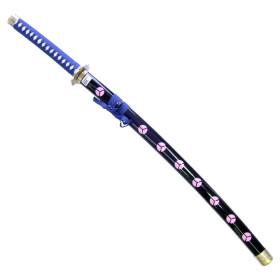

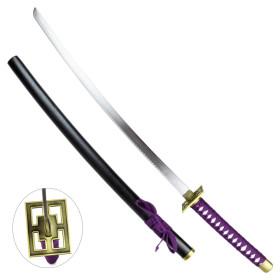


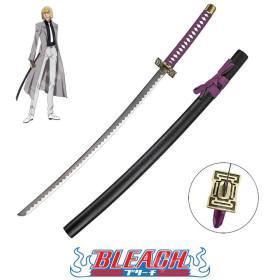
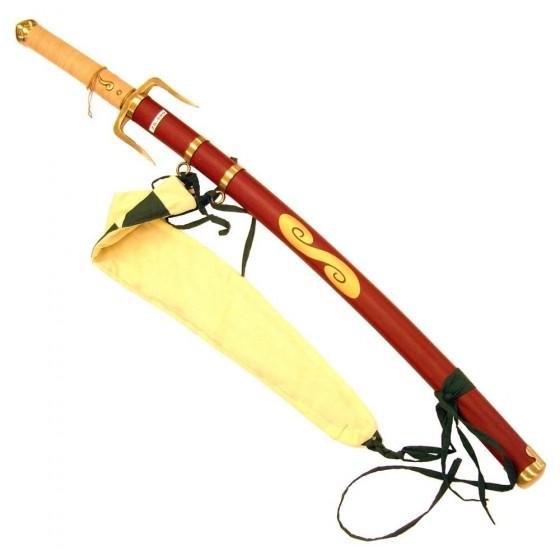


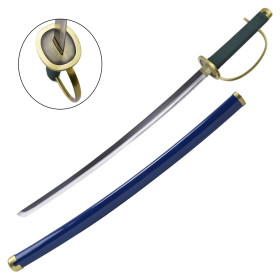
 (280 × 350 px) (1)_2.png)
.png)
